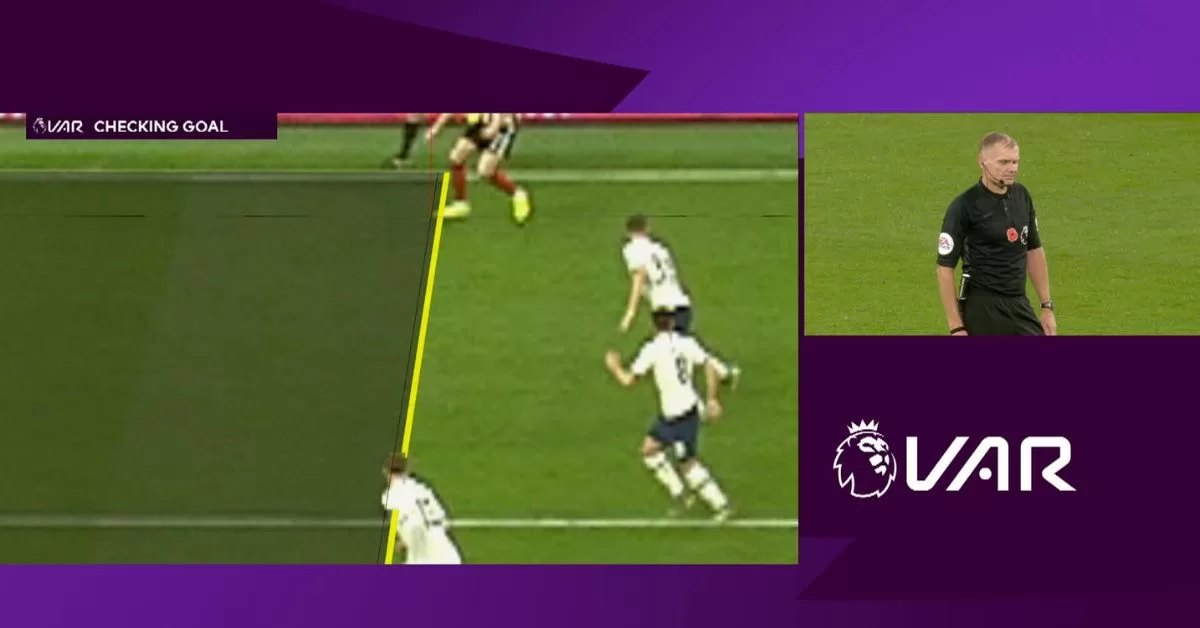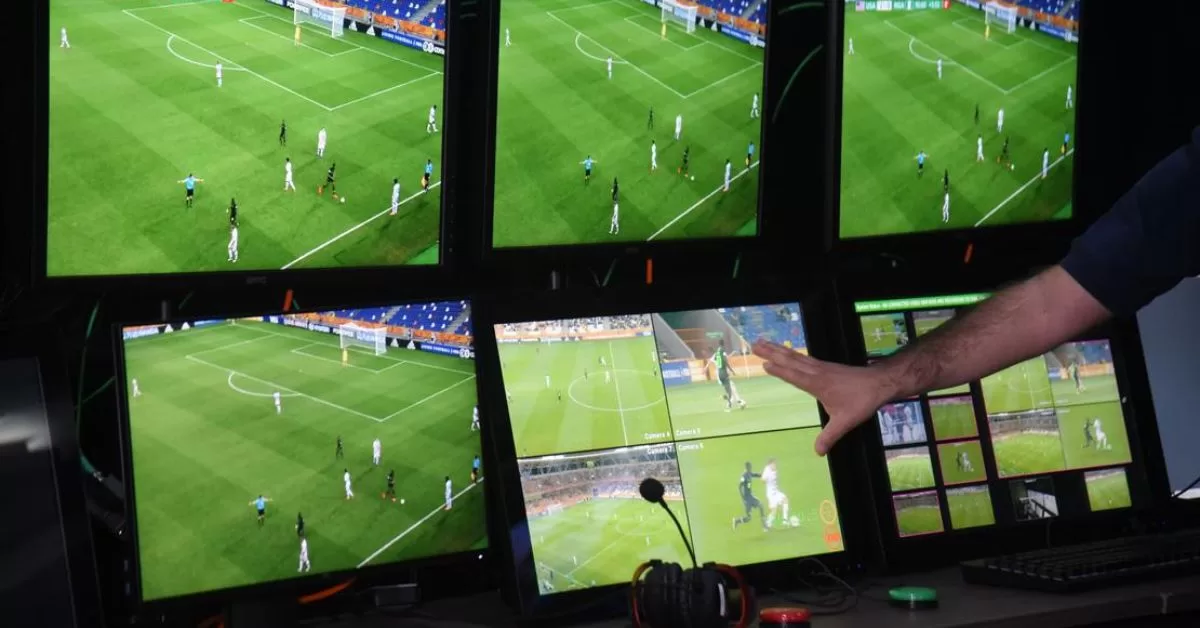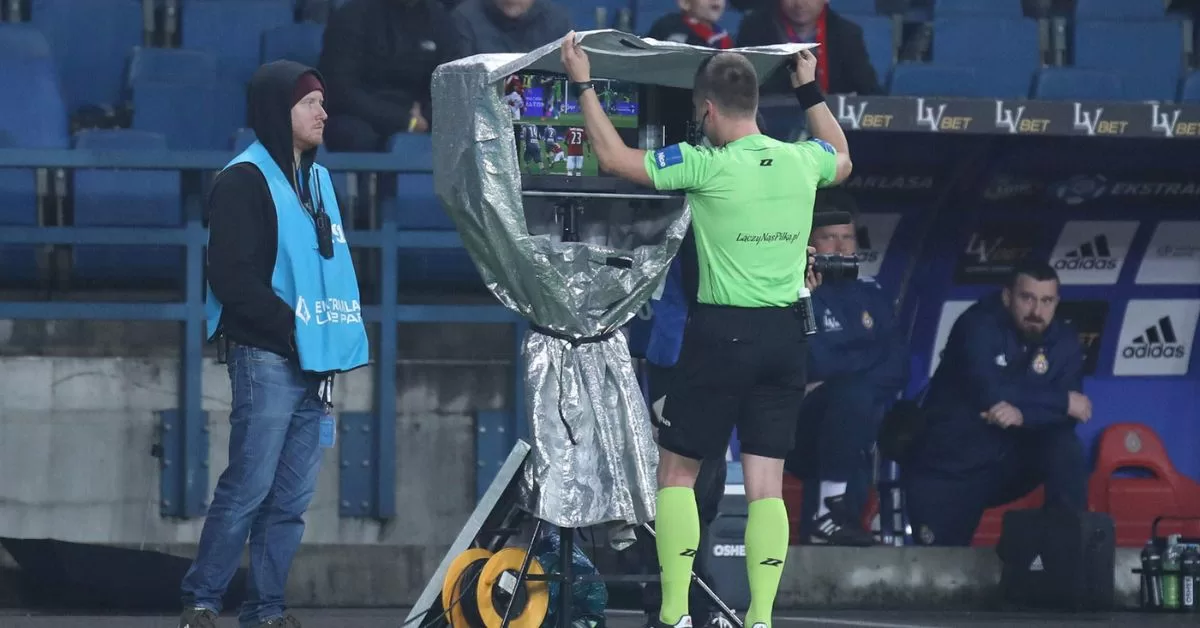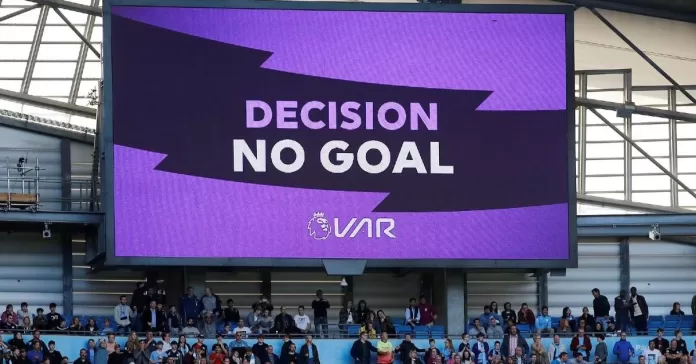VAR, or Video Assistant Referee, is a technology used in football to assist match officials in making more accurate decisions. It involves the use of video footage and a team of referees. They analyze the footage to provide additional information to the on-field officials. VAR was introduced in football by the International Football Association Board (IFAB). The body is responsible for determining the Laws of the Game. However, the decision to implement VAR was made by IFAB in 2016 after extensive testing and trials.
YouTube cc: @SirAlexmu
The FIFA Confederations Cup held in Russia in 2017 was the first major competition to adopt VAR. VAR was subsequently used in various domestic leagues and cup competitions around the world. Leagues such as the English Premier League, La Liga in Spain, Serie A in Italy, and the Bundesliga in Germany.
Why is VAR introduced in Football?
VAR was introduced in football to address the following objectives:

- Increase Accuracy:
The primary goal of VAR is to improve the accuracy of refereeing decisions. Football matches often involve fast-paced action and critical moments that can be challenging for referees to judge accurately in real-time. VAR provides an additional tool to review incidents and ensure that the correct decisions are made. - Minimize Errors:
VAR aims to reduce clear and obvious errors made by on-field referees that can significantly impact match outcomes. It helps rectify situations where goals are incorrectly awarded or disallowed. When penalties are wrongly given or denied, or mistaken identity in disciplinary actions occurs. - Enhance Fairness:
VAR promotes fairness in the game by ensuring that all teams are treated equally and that correct decisions are made consistently across different matches. It helps to level the playing field by reducing the influence of human errors or bias in referee judgments. - Maintain Integrity:
The introduction of VAR is also aimed at upholding the integrity of the sport. It helps to prevent and deter cheating, simulation, and other forms of misconduct.
While VAR has its own set of challenges and controversies, its implementation seeks to provide referees with additional tools to make more informed decisions and improve the overall quality and fairness of football matches.
Is There a Video Assistant Referee Limit in Football?
Yes, there is a limit to the use of VAR in football. The specific guidelines and protocols regarding the use of VAR may vary slightly across different competitions and leagues, but there are generally some common principles and limitations. Here are a few key points:

Reviewable Incidents:
VAR is typically used to review four types of incidents: goals, penalties, red cards, and cases of mistaken identity. These are the main areas where VAR intervention can occur.
Clear and Obvious Errors:
VAR is meant to correct clear and obvious errors made by the on-field referee. It is not intended to review every decision or intervene in subjective matters requiring interpretation. The threshold for VAR intervention is generally set high to ensure that only significant errors are corrected.
Limited Challenges:
In some competitions, teams may have the option to challenge a limited number of decisions using VAR. If their challenge is successful and the decision is overturned, they may retain their challenge, but if the challenge is unsuccessful, they may lose the right to challenge further decisions.
On-field Referee’s Discretion:
The final decision-making authority lies with the on-field referee. While VAR provides advice and additional information, the referee has the discretion to accept or reject the VAR’s input. In some cases, the referee may choose to review the video footage personally on a pitch-side monitor before making a decision.
Time Limit:
There is a time limit for VAR reviews to ensure that the game flow is not excessively interrupted. If a decision cannot be reached within a reasonable timeframe, the on-field referee may decide based on their initial judgment.
How does VAR in Football Work?
VAR (Video Assistant Referee) in football works through the following steps:

- Incident Occurs: During a match, an incident occurs that falls within the scope of VAR review, such as a potential goal, penalty, red card offence, or case of mistaken identity.
- VAR Alert: The VAR team, consisting of video assistant referees, monitors the match from a dedicated video operation room. They closely watch the live broadcast footage and communicate with the on-field referee team via radio communication.
- VAR Intervention: If the VAR team identifies a clear and obvious error or a missed incident, they inform the on-field referee and suggest a review. Alternatively, the on-field referee may choose to seek a review themselves if they have doubts or need additional information.
- Review Process: The on-field referee can either accept the VAR team’s advice immediately or decide to review the incident personally on a pitch-side monitor. The referee can access multiple camera angles and slow-motion replays to assess the incident.
-
Decision-Making: Based on the review, the on-field referee can take one of the following actions:
a. Confirm the Decision: If the on-field referee’s initial decision was correct, they can confirm it, and the game continues.
b. Overturn the Decision: If the on-field referee determines that their initial decision was clearly wrong, they can overturn it and make the correct decision based on the VAR’s input.
c. Modify the Decision: If the on-field referee concludes that their initial decision was partially correct or needs modification, they can adjust it accordingly based on the VAR’s advice.
- On-Field Signal: After the decision is made, the on-field referee communicates the outcome to the players, coaches, and spectators. This may involve using hand signals or a communication system to indicate the revised decision.
- Game Resumes: Once the decision has been communicated, the game resumes from the point of interruption or the appropriate restart, depending on the nature of the incident.
It’s worth noting that the implementation of VAR may vary across different leagues and competitions. The specific protocols, review processes, and decision-making authority can differ slightly, but the general principles remain consistent in using video technology to assist referees in making more accurate decisions.
How Much Does a VAR Cost?
It is challenging to provide an exact figure for the cost of VAR implementation as it varies depending on the scale and requirements of each league or competition. Some reports suggest that the cost can range from several hundred thousand dollars to several million dollars per season for a top-tier league.

Ultimately, the decision to implement VAR takes into account various factors, including the potential benefits in terms of improved decision-making, fairness, and the overall integrity of the game, balanced against the associated costs and resources required.
READ MORE: Rules in a Football Match
VAR aims to minimize glaring errors and enhance the overall fairness of the game. However, it is important to note that the final decision still rests with the on-field referee, and the VAR is meant to be a supplementary tool rather than an overruling authority.


